2.3 Equipment
To perform IV push medication administration, nurses must gather basic equipment to perform the task. The main supplies that are required to administer medications via the IV push route include syringes, needles, needleless vial accesses, saline flush syringes, and antiseptic pads (chlorhexidine-based, alcohol, or tincture of iodine). The syringe and needle sizes that are selected to draw out the medication from the medication vial often depend on the characteristics of the fluid and the volume of medication to be given. For example, medications that are more viscous (such as lorazepam) may require a larger bore needle in order to be easily drawn into the syringe.
Additional equipment that will be needed to safely administer medications via the IV push route include gloves, the specific medication ampule or vial, a drug reference guide, and a watch with a second hand so that a nurse can accurately time the rate of administration for the IV push. Common syringe sizes range from 1 mL to 60 mL syringes. See Figure 2.3[1] for an image of various sizes of syringes. Most IV push medication for adult patients will be delivered in sizes ranging from 3 mL, 5 mL, or 10 mL using a luer lock syringe. Luer lock syringes have interlocking threads to hold the connection together. When selecting a syringe, ensure the size will hold the total volume of medication with reconstitution solution. When reading the volume of medication within the syringe, read the volume where the plunger is in contact with the solution being administered.
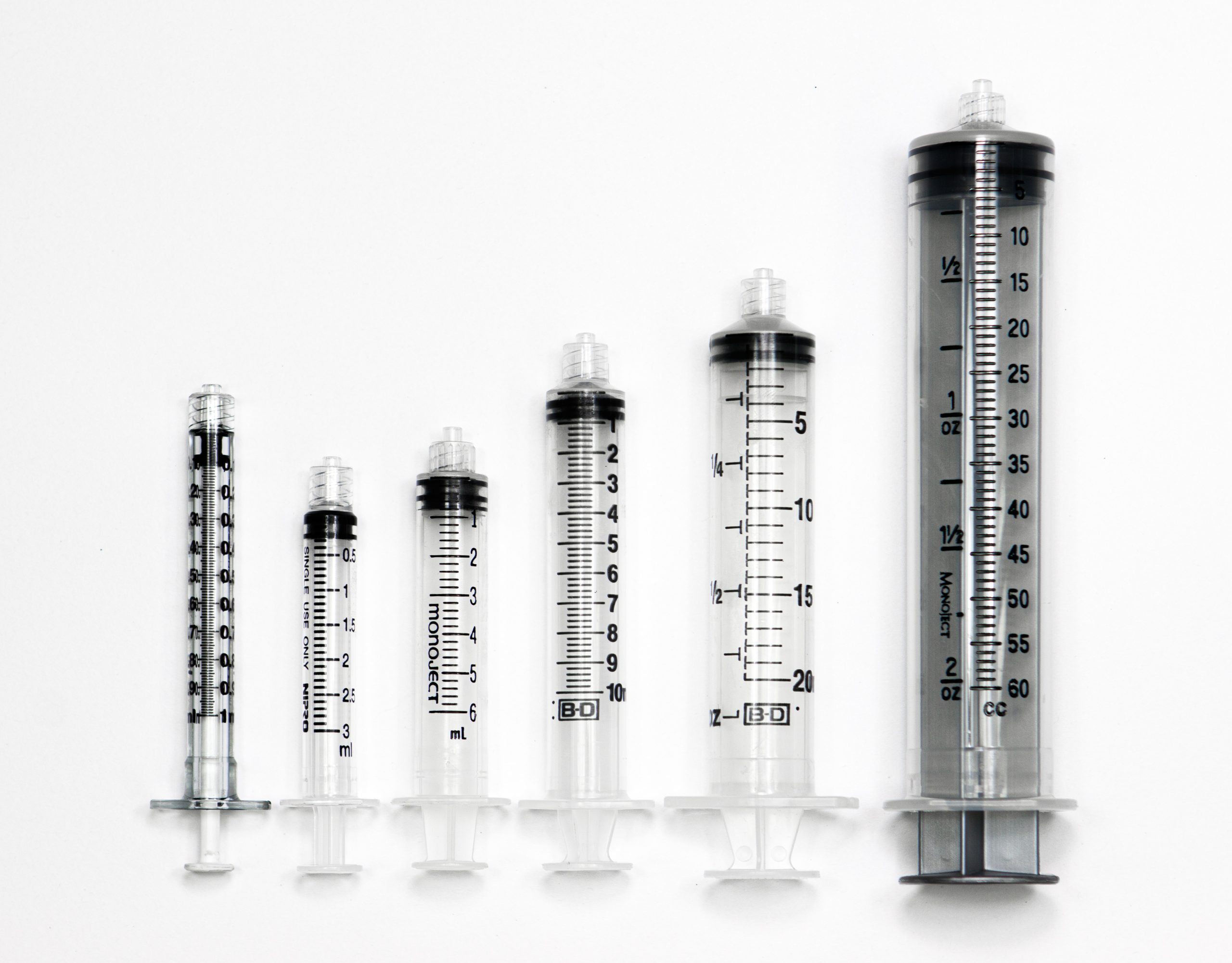
View a YouTube video[2] on how to read a syringe:
Needles used to withdraw medication from the vial should also be appropriately sized to account for the type of solution being withdrawn. The gauge of a needle is the diameter of the needle. Gauges can vary from very small diameter (25 to 29 gauge) to large diameter (18 to 22 gauge). Note the higher the number of gauge, the smaller the diameter of the needle. A needle will have its gauge and length marked on the outer packaging.[3] See Figure 2.4[4] for images of various needle sizes.
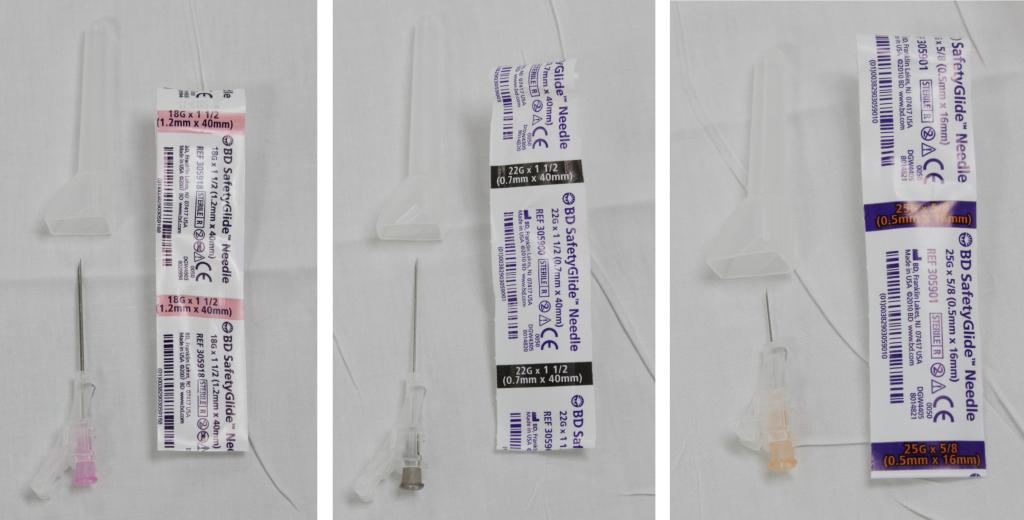
More viscous medications require an 18-gauge or 20-gauge needle to ensure easy withdrawal of the medication from the vial and into the syringe. Smaller gauge needles may bend or break when accessing vial rubber stops, placing a nurse at risk for a needlestick or injury when withdrawing the medication.
There are also many needleless access devices, often referred to as blunt needle devices, available in medical facilities. The “blunt needles” can be used to puncture a vial rubber stopper and withdraw medication but should not be used to inject medication into patients. These needleless accesses are commonly made of plastic and reduce the danger of needle puncture. Needleless devices should be utilized whenever possible to reduce the risk of inadvertent needlesticks. Some blunt needle devices also have filters and should be used when withdrawing medication from an ampule.
Ampules, Vials, and Prefilled Syringes
There are various types of parenteral medication containers in which medications may be stored, such as glass ampules, single dose or multi-dose vials, and prefilled syringes.
Ampules are glass containers in 1 mL to 10 mL sizes that hold a single dose of medication in liquid form. They are made of glass and have a scored neck to indicate where to break the ampule. Because there is risk of being cut by glass when opening a glass ampule, the nurse should use an ampule breaker or wrap an alcohol swab package around the neck of the ampule for protection See Figure 2.5[5] for an image of opening an ampule. It is important that the nurse use caution and firmly grasp the ampule neck, breaking the ampule at the neck with firm pressure applied. Nurses should break the ampule away from their hands to help ensure that they do not inadvertently cut themselves in the process of breaking open an ampule. Once the ampule is open, a blunt needle device with a filter must be used when withdrawing medication to prevent glass particles from being drawn up into the syringe. Glass ampule pieces must be disposed of in a sharps containers following medication administration.
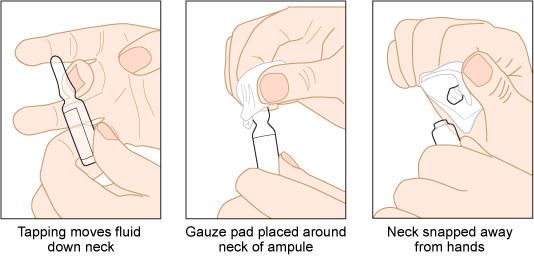
A vial is a single- or multi-dose plastic or glass container with a rubber seal top, covered by a metal or plastic cap. A single-use vial must be discarded after one use. A multi-dose vial must be labeled with the date it was opened and its “beyond use date” (BUD). Guidelines indicate a multi-dose vial may be used for up to a maximum of 28 days of opening unless there is a specific expiration date labelled by the manufacturer.[6]
Needless caps on vials are dust covers only and are not considered sterile. After removing the vial cap, scrub the diaphragm of the cap using 70% isopropyl alcohol. If using more than one vial, separate alcohol wipes must be used on each vial.[7]
Because a vial is a closed system, air equal to the volume of solution to be withdrawn must first be injected into the vial to permit the removal of the solution. See Figure 2.6[8] for an image of medication being withdrawn from a vial.
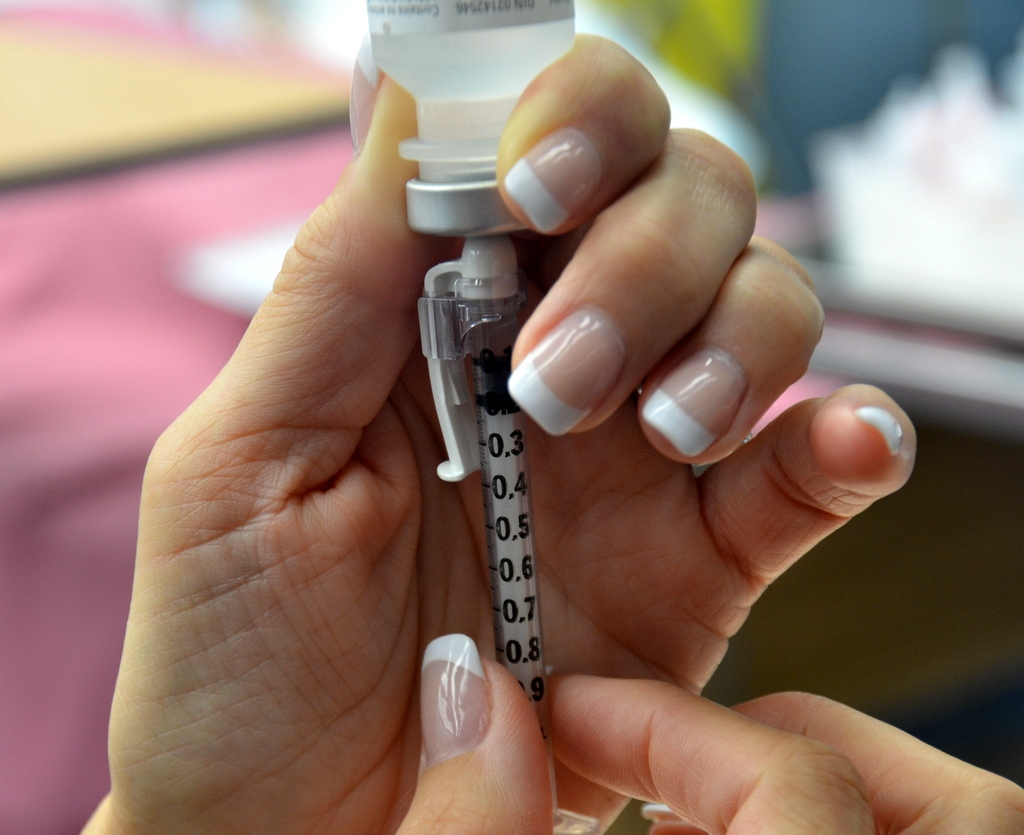
Prefilled syringes contain prefilled volumes of medication. Many medications used during emergency medication situations are contained in prefilled syringes, such as epinephrine or naloxone. See Figure 2.7[9] for an image of a prefilled syringe. Some prefilled syringes require connection to a syringe device containing a plunger. Prior to administering medication via a prefilled syringe, examine the volume of medication within the syringe, verify the amount with the dose in the medication order, and perform any math calculations required. Remove protective caps from the syringe barrel and medication cartridges and secure the plunger device onto the prefilled syringe by screwing the end of the push device into the plunger barrel. Per manufacturer guidelines, advance the plunger to expel air contained within the device.
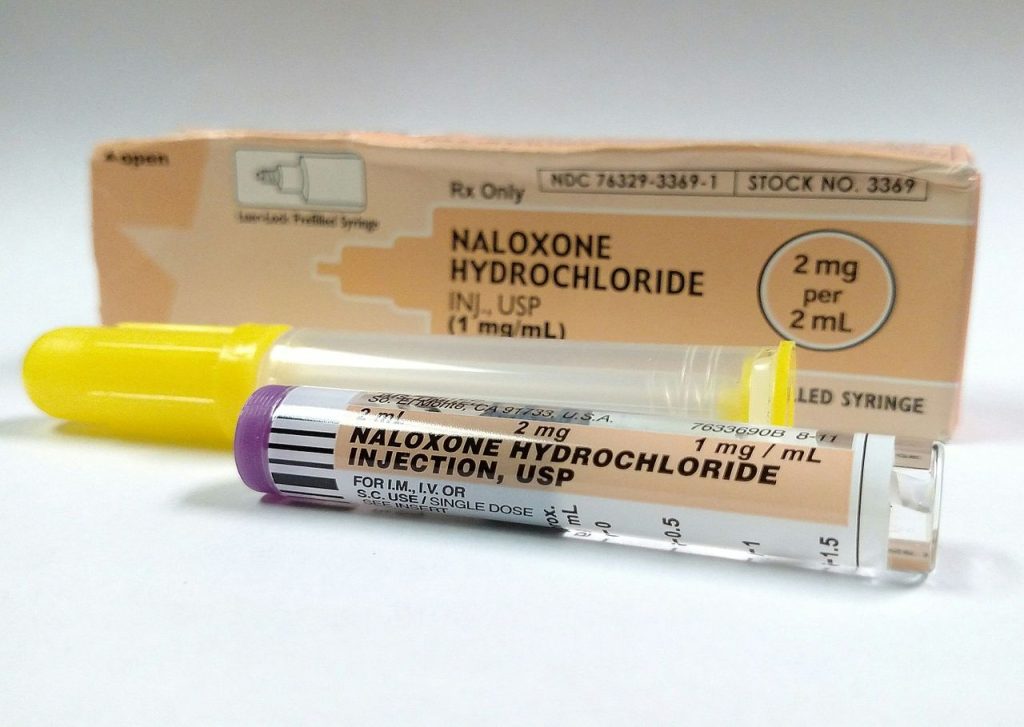
- “Syringes 3I3A0446.jpg” by Chippewa Valley Technical College is licensed under CC BY 4.0 ↵
- RegisteredNurseRN. (2017, June 12). How to read a syringe 3 mL, 1 mL, insulin, & 5 mL/cc | Reading a syringe plunger [Video]. YouTube. All rights reserved. Video used with permission. https://youtu.be/_TnDr8cKums ↵
- This work is a derivative of Clinical Procedures for Safer Patient Care by British Columbia Institute of Technology and is licensed under CC BY 4.0 ↵
- “Needle 18g,” “Needle 22g,” and “Needle 25g” by Chippewa Valley Technical College are licensed under CC BY 4.0 ↵
- “preparing-an-ampule-1.png” by unknown author at Thomson Rivers University is licensed under CC BY 4.0. Access for free at https://pressbooks.bccampus.ca/clinicalproceduresforsaferpatientcaretrubscn/chapter/safe-injection-administration-and-preparing-medication-from-ampules-and-vials/ ↵
- Gorski, L. A., Hadaway, L., Hagle, M. E., Broadhurst, D., Clare, S., Kleidon, T., Meyer, B. M., Nickel, B., Rowley, S., Sharpe, E., & Alexander, M. (2021). Infusion therapy standards of practice (8th ed.). Journal of Infusion Nursing: The Official Publication of the Infusion Nurses Society, 44(1S Suppl 1), S1–S224. https://doi.org/10.1097/NAN.0000000000000396 ↵
- Gorski, L. A., Hadaway, L., Hagle, M. E., Broadhurst, D., Clare, S., Kleidon, T., Meyer, B. M., Nickel, B., Rowley, S., Sharpe, E., & Alexander, M. (2021). Infusion therapy standards of practice (8th ed.). Journal of Infusion Nursing: The Official Publication of the Infusion Nurses Society, 44(1S Suppl 1), S1–S224. https://doi.org/10.1097/NAN.0000000000000396 ↵
- “Book-pictures-2015-620.jpg” by unknown author is licensed under CC BY 4.0. Access for free at https://opentextbc.ca/clinicalskills/chapter/safe-injection-administration-and-preparing-medication-from-ampules-and-vials/ ↵
- “Naloxone_2_(cropped).jpg” by Mark Oniffrey is licensed under CC BY 4.0 ↵
Needleless access devices.
Glass containers in 1 mL to 10 mL sizes that hold a single dose of medication in liquid form.
A single- or multi-dose plastic or glass container with a rubber seal top, covered by a metal or plastic cap.
Syringes that contain prefilled volumes of medication within the device.

